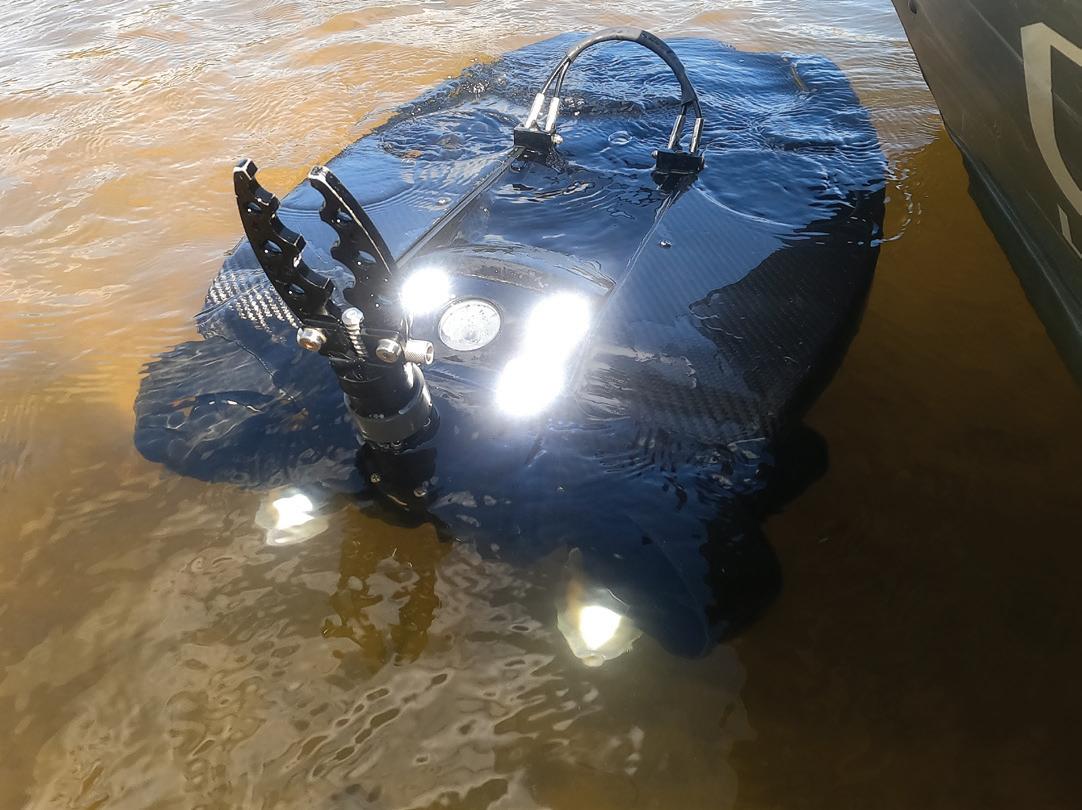M
From The Cover
The new fabric building in Lake County, Ohio is 73 feet by 120 feet with a 4,000-ton salt storage capacity. (Photo provided)
Insights into a successful salt storage project
James Gills P.E., P.S., Lake County Engineer and Traci Salkiewicz, P.E., Chief Deputy Engineer (Photo provided)
Article submitted by Greystone Construction
Lake County, Ohio, engineer James Gills needed to replace an old, deteriorating salt dome. “We had a teepee-shaped structure built in the mid-70s, and it only had a 900-ton road salt storage capacity. Lake County is in the strongest part of Ohio’s snowbelt, and we experience significant snowfalls leading to a high demand for salt, so much so that we were having trouble obtaining salt throughout the winter season. We needed to build something new with a much higher salt storage capacity.” Gills had another challenge — poor soil conditions. “We had soils borings done and it was determined that our soils were so bad it was recommended we dig out 8 to 10 feet of material and backfill with stone to accommodate a heavy structure similar to the teepee we were replacing. A fix like that is very, very expensive.” Gills researched all the options and noticed construction of fabric buildings in the region consisting of steel trusses covered in a tensioned membrane cover. Gills was attracted to fabric structures for several reasons. “With the teepee structure, Lake County paid extra to have salt blown into the teepee. A large fabric structure not only costs less per square foot allowing for a much larger storage capacity on a budget, but would allow us to safely back in a truck, dump, and stack the salt.” Gills analyzed fabric building designs and layout to determine which would work best given his poor soil conditions. “Greystone Construction had a solution for our poor soils. Greystone’s method of installing the structure on independent concrete pads and piers provided an engineered solution which minimized the amount of expensive soil corrections required.” 10 THE MUNICIPAL | JANUARY 2022
Gills purchased the Britespan fabric building materials from Greystone Construction and Britespan Building Systems through Sourcewell, a cooperative service purchasing program used by government entities across the country. “Time is money and we saved a lot of both using the Sourcewell process and avoided the lengthy public bidding process that could have added six weeks to our timeline.” The Greystone Construction crew completed the concrete piers in three days. After a concrete cure period, the Greystone crew returned and installed a 73-foot-by-120-foot facility on top of the piers in just five days. Eight-foot high panels were placed continuously along three sides of the building interior to contain the salt. “Our new fabric building facility holds 4,000 tons of salt. Combine that with the storage available at other facilities in Lake County and we have enough salt stored to last an entire winter.” “The Greystone team was great and so quick that I would absolutely work with Greystone again and have recommended them to others.” Best practices for designing and building safe, efficient and long lasting salt and sand storage buildings Greystone has built thousands of fabric buildings across the U.S. and is an industry expert having built more than 1.5 million square feet of salt storage. Greystone Vice President Colin O’Brien shares best practices to ensure a successful project.

















